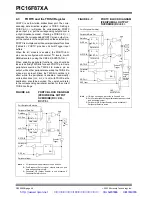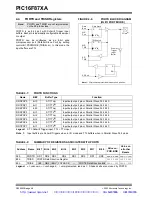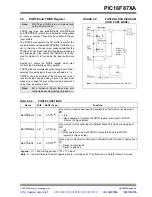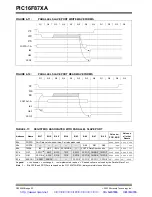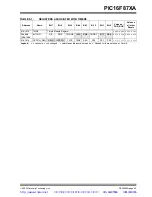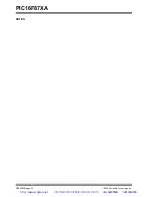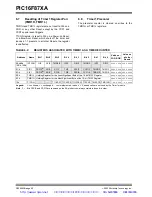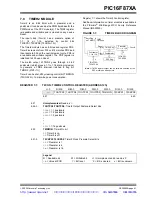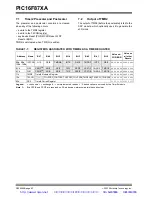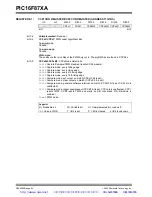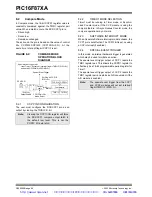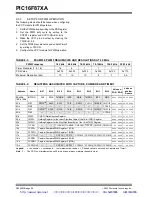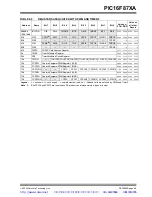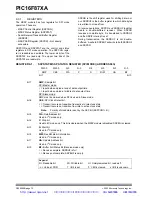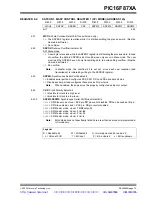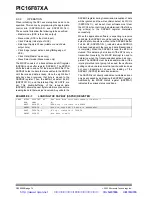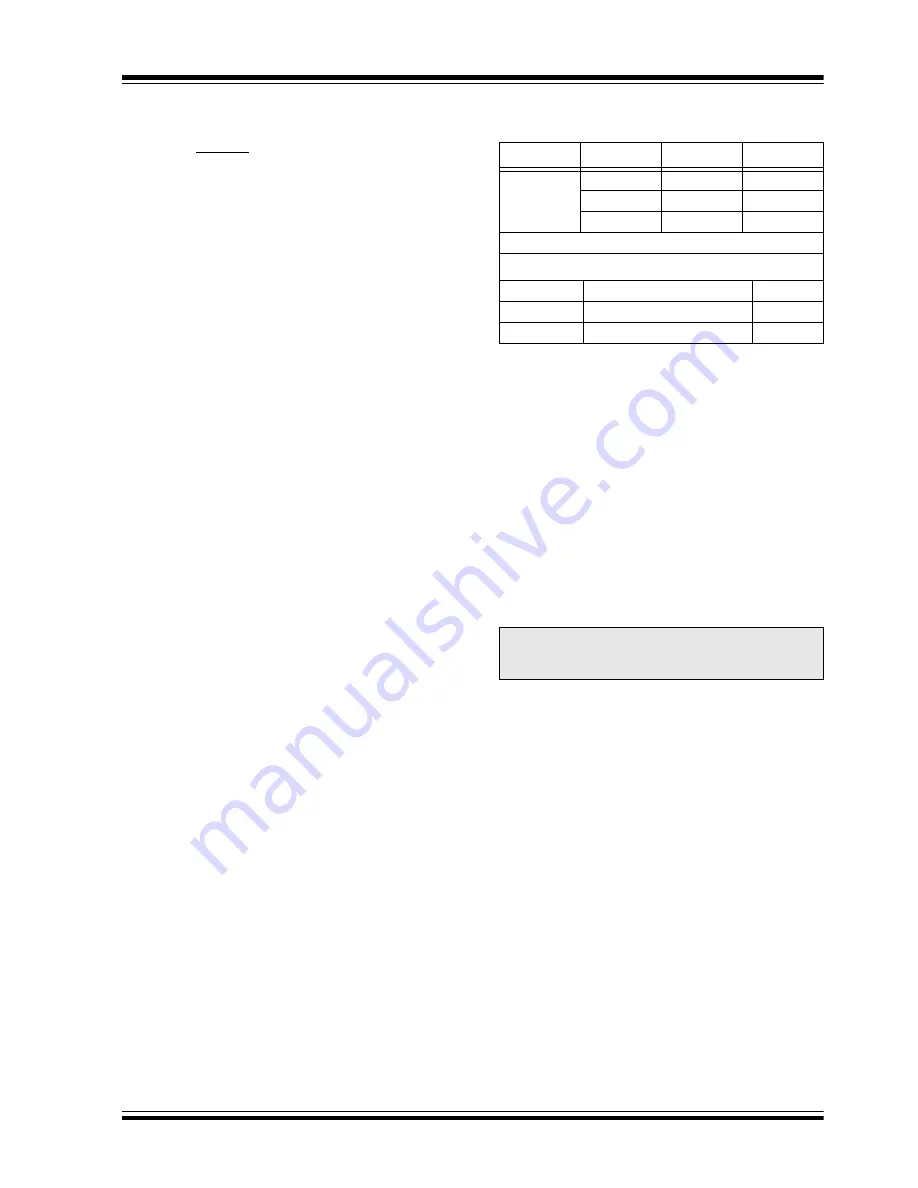
2003 Microchip Technology Inc.
DS39582B-page 59
PIC16F87XA
6.4
Timer1 Operation in
Asynchronous Counter Mode
If control bit T1SYNC (T1CON<2>) is set, the external
clock input is not synchronized. The timer continues to
increment asynchronous to the internal phase clocks.
The timer will continue to run during Sleep and can
generate an interrupt-on-overflow which will wake-up
the processor. However, special precautions in
software are needed to read/write the timer.
In Asynchronous Counter mode, Timer1 cannot be
used as a time base for capture or compare operations.
6.4.1
READING AND WRITING TIMER1 IN
ASYNCHRONOUS COUNTER MODE
Reading TMR1H or TMR1L while the timer is running
from an external asynchronous clock will ensure a valid
read (taken care of in hardware). However, the user
should keep in mind that reading the 16-bit timer in two
8-bit values itself, poses certain problems, since the
timer may overflow between the reads.
For writes, it is recommended that the user simply stop
the timer and write the desired values. A write conten-
tion may occur by writing to the timer registers while the
register is incrementing. This may produce an
unpredictable value in the timer register.
Reading the 16-bit value requires some care.
Examples 12-2 and 12-3 in the PICmicro
®
Mid-Range
MCU Family Reference Manual (DS33023) show how
to read and write Timer1 when it is running in
Asynchronous mode.
6.5
Timer1 Oscillator
A crystal oscillator circuit is built-in between pins T1OSI
(input) and T1OSO (amplifier output). It is enabled by
setting control bit, T1OSCEN (T1CON<3>). The oscil-
lator is a low-power oscillator, rated up to 200 kHz. It
will continue to run during Sleep. It is primarily intended
for use with a 32 kHz crystal. Table 6-1 shows the
capacitor selection for the Timer1 oscillator.
The Timer1 oscillator is identical to the LP oscillator.
The user must provide a software time delay to ensure
proper oscillator start-up.
TABLE 6-1:
CAPACITOR SELECTION FOR
THE TIMER1 OSCILLATOR
6.6
Resetting Timer1 Using a CCP
Trigger Output
If the CCP1 or CCP2 module is configured in Compare
mode to generate a “special event trigger”
(CCP1M3:CCP1M0 =
1011
), this signal will reset
Timer1.
Timer1 must be configured for either Timer or Synchro-
nized Counter mode to take advantage of this feature.
If Timer1 is running in Asynchronous Counter mode,
this Reset operation may not work.
In the event that a write to Timer1 coincides with a
special event trigger from CCP1 or CCP2, the write will
take precedence.
In this mode of operation, the CCPRxH:CCPRxL regis-
ter pair effectively becomes the period register for
Timer1.
Osc Type
Freq.
C1
C2
LP
32 kHz
33 pF
33 pF
100 kHz
15 pF
15 pF
200 kHz
15 pF
15 pF
These values are for design guidance only.
Crystals Tested:
32.768 kHz
Epson C-001R32.768K-A
± 20 PPM
100 kHz
Epson C-2 100.00 KC-P
± 20 PPM
200 kHz
STD XTL 200.000 kHz
± 20 PPM
Note 1:
Higher capacitance increases the stability
of oscillator but also increases the start-up
time.
2:
Since each resonator/crystal has its own
characteristics, the user should consult
the resonator/crystal manufacturer for
appropriate values of external
components.
Note:
The special event triggers from the CCP1
and CCP2 modules will not set interrupt
flag bit, TMR1IF (PIR1<0>).
http://www.xinpian.net
提供单片机解密、IC解密、芯片解密业务
010-62245566 13810019655


